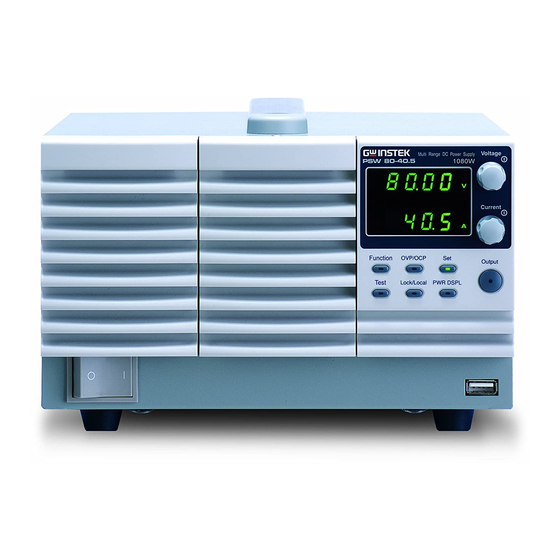
GW Instek PSW 30-36 User Manual
Multi-range dc power supply
Hide thumbs
Also See for PSW 30-36:
- User manual (184 pages) ,
- Programming manual (118 pages) ,
- Service manual (105 pages)
Table of Contents
Advertisement
Quick Links
Download this manual
See also:
Programming Manual
Advertisement
Chapters
Table of Contents
















Need help?
Do you have a question about the PSW 30-36 and is the answer not in the manual?
Questions and answers